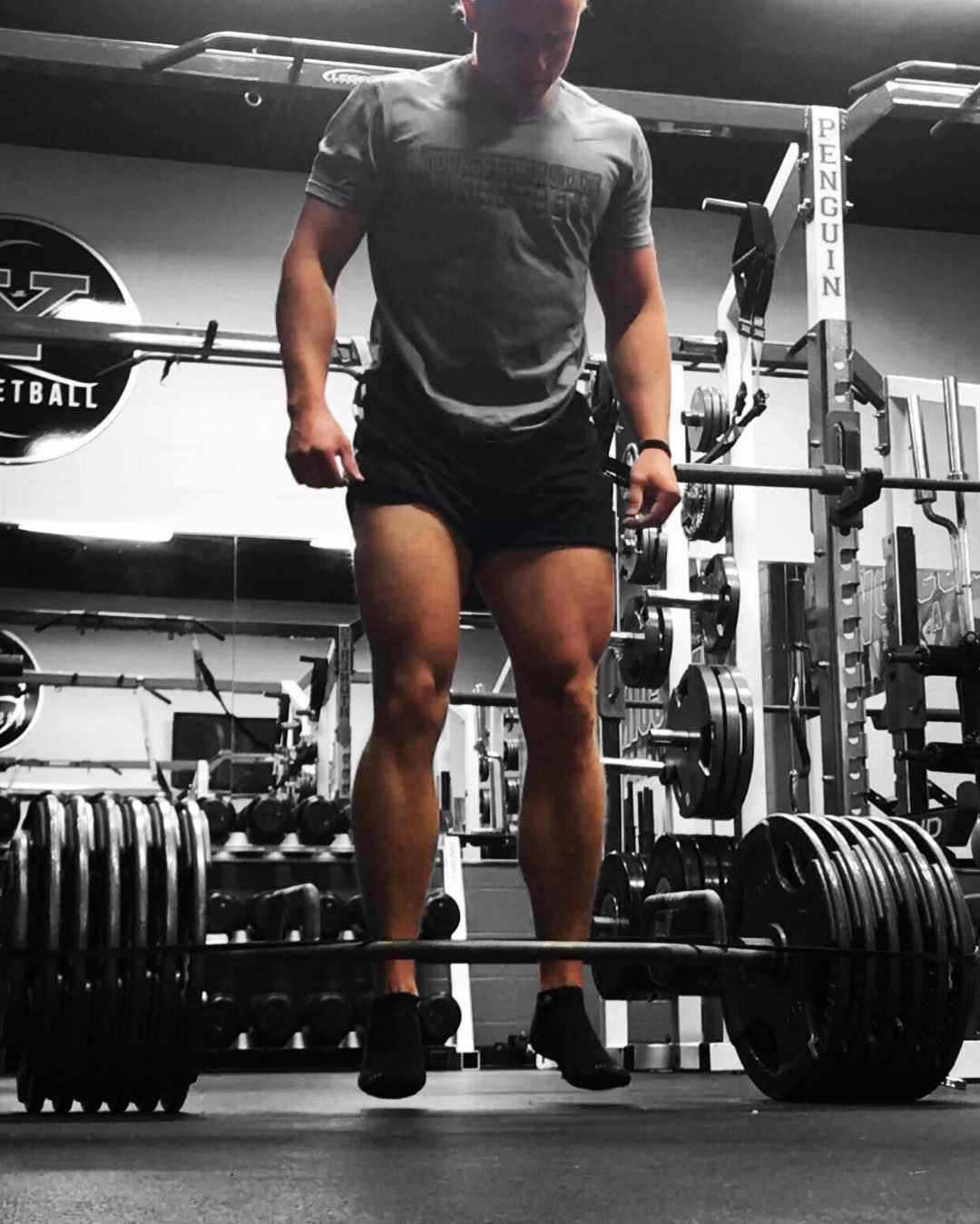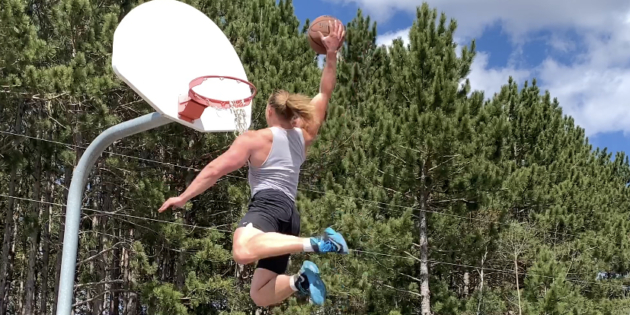Humans have two basic types of muscle fibers – Type I (Slow twitch) and Type II (Fast Twitch).
Type II fibers are further separated into Type IIa (producing high power/fast twitch) and Type IIx (producing the highest power/fastest twitch).
If you want to jump higher, sprint faster, and be overall more explosive, you need to:
A) have good genetics for Type IIx fibers and/or
B) train in a way that ‘shifts’ your fiber type to more Type IIx
Since your parents didn’t help you with option A), we’ll focus on muscle fiber shifts through training.
Heavy Lifting ‘Switches Off’ Type IIx Fiber Genes
Most athletes know heavy lifting enhances force production. As Power = Force x Velocity, developing one’s force capability goes a long way to increasing one’s power output (jump & sprint performance). However, heavy lifting isn’t all positive.
In a 2018 study by Andersen et al., the researchers looked at the effect of heavy lifting on the gene for Type IIx fibers.
Untrained people performed two consecutive days of strength training. In the following 4 days, the gene for the type IIx fiber “switched-off”. Over time, this would lead to a shift from the fastest twitch fibers (IIx) to the not-as-fast fibers (IIa).
We know heavy lifting recruits the fastest twitch fibers. However, for some reason, the genes for Type IIx become ‘silenced’ in the days that follow.
So how do we make heavy lifting beneficial (increasing force capacity) without the downside (temporarily switching off Type IIx genes)?
Rest
In another study by Andersen et al., muscle fiber composition was studied before and after 3 months of heavy lifting in adult sedentary men.
They found that the isoform for Type IIx fiber started at 9.3 +/- 2.1%.
After 3-months of resistance training it decreased to 2.0 +/- 0.8%.
And following 3-months of detraining, it increased to 17.2 +/- 3.2%.
This has been termed Fast Twitch Overshoot.
By performing heavy resistance training for awhile and resting for awhile, Type IIx fibers “overshoot” to new levels.
But why does this happen?
The Fastest Twitch Athletes: Sedentary People
In a study by Staron et al. they looked at the muscle fiber composition of three groups:
8 Runners – this group had the greatest Type I at 68.2%
7 Weightlifters – this group had the highest Type IIa at 39.7%
5 Sedentary Controls – this group had the highest type IIx at 43.2%.
The human body adapts to exercise – any exercise – by shifting fibers to be better at endurance. Since sedentary people do nothing or very little, their body never has to adapt and shift fiber types away from Type IIx. Netflix & Chill keeps them fast twitch.
Tokens from Supertraining
Some golden nuggets from Yuri Verkhoshansky regarding fast twitch overshoot:
– “If an athlete wishes to increase the relative amount of fast twitch muscle fibre isoforms, a logical method would be to decrease the training load and allow the faster fibres to express themselves a few weeks later.”
– “Immobilisation causes the normally slow-twitching soleus muscle to become fast twitching”
– “The ‘default’ option for muscles seems the be the fast myosin chain.”
Tendon Changes
Tendon connects muscle to bone. If tendon is stiff, the transfer from muscle to bone becomes more efficient. This has performance enhancing benefits. In a normal tendon, it is more stretchy near the muscle and more stiff near the bone. In a study by Keith Baar, he found 5-weeks of immobilization caused the entire tendon to become stiff.
Tendon is less stiff near the muscle because muscular contraction causes shearing within the tendon, which breaks cross-links. When muscular contraction is taken away (immobilization), cross-links are no longer broken and the tendon gets more stiff. Could a less extreme form of rest lead to an increase in tendon stiffness? If you’re at least taking away intense, high volume lifting, I think so.
Takeaway
Train hard and lift heavy for awhile.
Take some time off.
Watch your sprinting and jumping performance reach new levels.
Repeat until you’re an absolute savage.
In The Vertical Jump Protocol, athletes report the best gains in jumping ability after an easy week of training or even after a week of no training.
If you’re running Hypertrophy Cluster Protocol, take a week or two easy after the program to see big vert and speed gains.
REFERENCES
Andersen, J. L. & Gruschy-Knudsen, T. (2018). Rapid switch-off of the human myosin heavy chain IIX gene after heavy load muscle contractions is sustained for at least four days. Scandinavian Journal of Medicine & Science in Sports, 28(2), 371-80.
Andersen, J. L. & Aagaard, P. (2000). Myosin heavy chain IIX overshoot in human skeletal muscle. Muscle Nerve, 23(7), 1095-104.
Staron, R. S., Hikida, R. S., Hagerman, F. C., Dudley, G. A., & Murray, T. F. (1984). Human skeletal muscle fiber type adaptability to various workloads. The Journal of Histochemistry and Cytochemistry, 32(2), 146-52.
Verkhoshansky, Y. V. & Siff, M. C. (2009). Supertraining, 6th Edition Expanded Version. Verkhoshanksy SSTM: Rome 2009.
Baar K. (2017). Minimizing Injury and Maximizing Return to Play: Lessons from Engineered Ligaments. Sports medicine (Auckland, N.Z.), 47(Suppl 1), 5–11.








